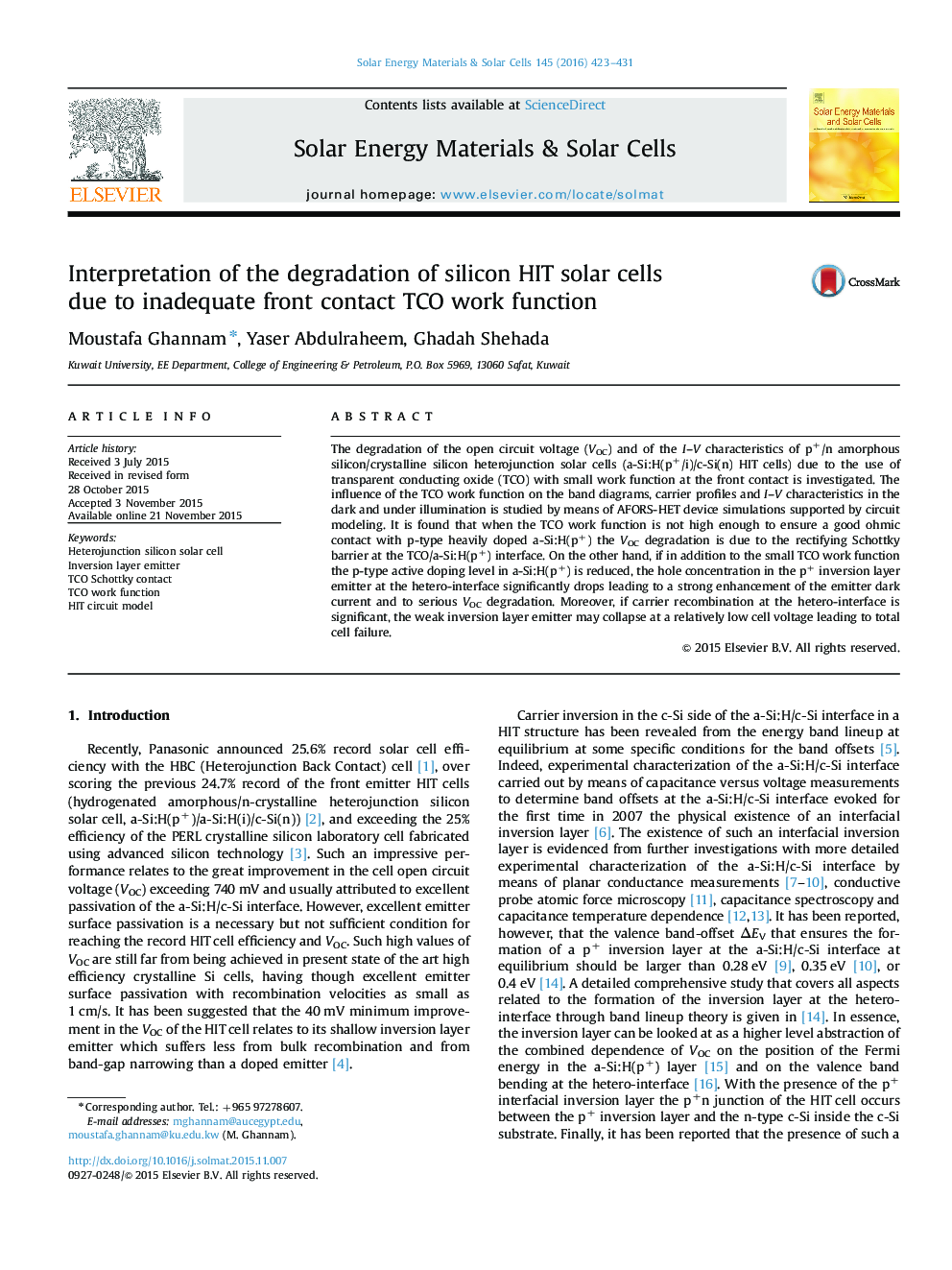| Article ID | Journal | Published Year | Pages | File Type |
|---|---|---|---|---|
| 77699 | Solar Energy Materials and Solar Cells | 2016 | 9 Pages |
•With heavy aSi doping & small TCO WF HIT degradation is due to TCO Schottky contact.•With low aSi doping & small TCO WF E. fields at TCO/aSi & aSi/cSi interfaces merge.•Strong p+ inversion at aSi/cSi interface is necessary for HIT cell proper operation.•Merging E. fields leads to weak inversion at aSi/cSi interface & to HIT degradation.•Ultimately E. field merging leads to inversion layer emitter collapse & cell failure.
The degradation of the open circuit voltage (VOC) and of the I–V characteristics of p+/n amorphous silicon/crystalline silicon heterojunction solar cells (a-Si:H(p+/i)/c-Si(n) HIT cells) due to the use of transparent conducting oxide (TCO) with small work function at the front contact is investigated. The influence of the TCO work function on the band diagrams, carrier profiles and I–V characteristics in the dark and under illumination is studied by means of AFORS-HET device simulations supported by circuit modeling. It is found that when the TCO work function is not high enough to ensure a good ohmic contact with p-type heavily doped a-Si:H(p+) the VOC degradation is due to the rectifying Schottky barrier at the TCO/a-Si:H(p+) interface. On the other hand, if in addition to the small TCO work function the p-type active doping level in a-Si:H(p+) is reduced, the hole concentration in the p+ inversion layer emitter at the hetero-interface significantly drops leading to a strong enhancement of the emitter dark current and to serious VOC degradation. Moreover, if carrier recombination at the hetero-interface is significant, the weak inversion layer emitter may collapse at a relatively low cell voltage leading to total cell failure.
